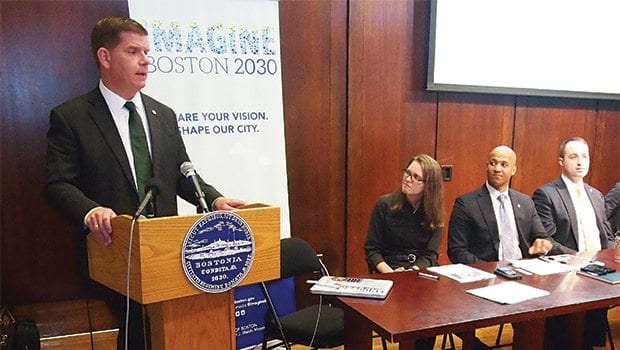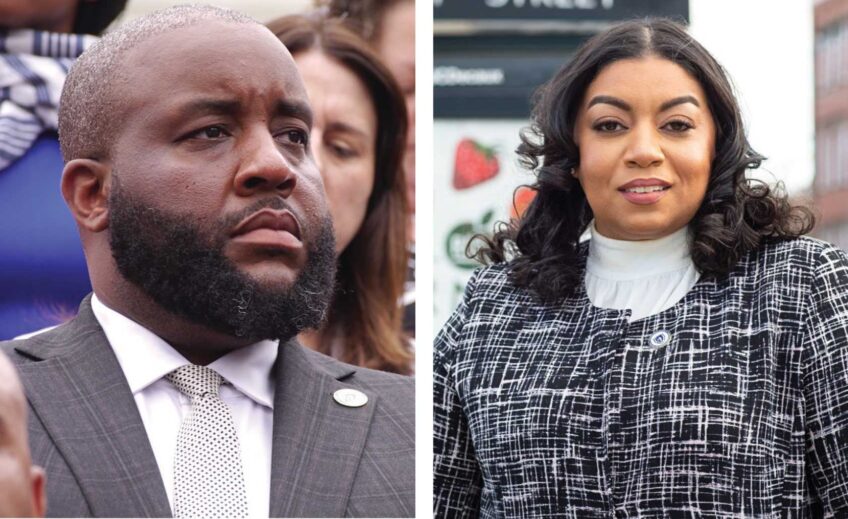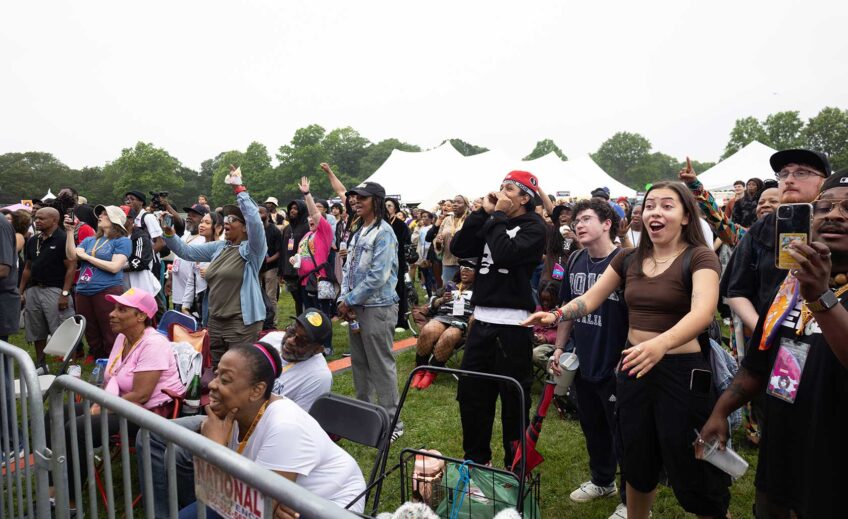City releases Boston 2030 draft
Seeks expansion at neighborhood edges

Boston’s population is projected to make a population jump of 20 percent by 2050 to 800,000 residents. To absorb the increase, city officials are planning to expand existing neighborhoods while preserving open space, according to a strategic plan entitled “Expanding Opportunity,” released last week.
On the web
The full draft “Expanding Opportunity” report is available at http://imagine.boston.gov/expandingopportunity/
“Expanding Opportunity,” a draft of which was released last week, is aimed at creating a “healthy, thriving and innovative city for 2030 and beyond,” according to the city’s website. It also addresses managing the influx of residents and the resulting pressures on housing affordability, transit and quality of life.
“We have to identify areas where we can grow,” said Mayor Martin Walsh, during a meeting with reporters on Nov. 17. “We have 47 square miles, and there are areas where we can’t grow.”
Boston is in the midst of a building boom, with nearly 10,000 new units constructed in the last two years and an additional 39,000 units either planned or under construction. But so far, much of that construction has been luxury units that are out of reach of the majority of Boston residents, whose median income is $53,000 a year despite housing costs that are more than twice as expensive as the rest of the U.S.
Added housing
During the Thursday press conference, Walsh and other city officials said they are working to increase the city’s stock of moderately-priced units. At the same time, Walsh said, the new construction may already have exerted downward pressure on prices, as evidenced by a softening in the rental market, which for the last several years has seen yearly increases.
“It seems we have stabilized rents somewhat,” Walsh said. “That’s important. I expect that in 2017 we’ll see some real progress.”
While Department of Neighborhood Development Director Sheila Dillon said the city is building its way out of the housing affordability crisis, she stressed that her department does not have hard data on displacement. Currently, DND staff are combing through records of evictions in housing court to track where and when renters are being displaced.
While rents may be stabilizing, demand for land remains strong in Boston. Hemmed in by the harbor along with the Charles and Neponset rivers, city planners are looking at underutilized industrial areas, like the Readville section of Hyde Park, the Beacon Yards in Allston, Newmarket / Widett Circle, which lies at the border of Roxbury and South Boston, and the edge of the South Boston waterfront area.
“Together, the existing neighborhoods, commercial cores and neighborhood edges have the capacity to accommodate Boston’s projected growth,” the report reads.
At the same time, city planners are looking to transit solutions like the Fairmount commuter rail line to facilitate the movement of city residents to job centers like downtown and the waterfront.
Transit and open space
Asked about the likelihood of increased state investment in state transit projects, Walsh said investment in Boston will ultimately help the entire commonwealth.
“We need a strong and reliable transit system,” he told reporters. “We produce 20 percent of tax revenue in the state, and that’s only going to grow. It’s going to be vitally important for the T to look at this plan.”
The plan also places renewed attention on open space and culture, with calls for investments in Franklin Park, the extension of the Emerald Necklace park system down Columbia Road to South Boston and the establishment of Arts Innovation Districts, beginning with Upham’s Corner, where the renovated Strand Theatre currently serves as an anchor.







